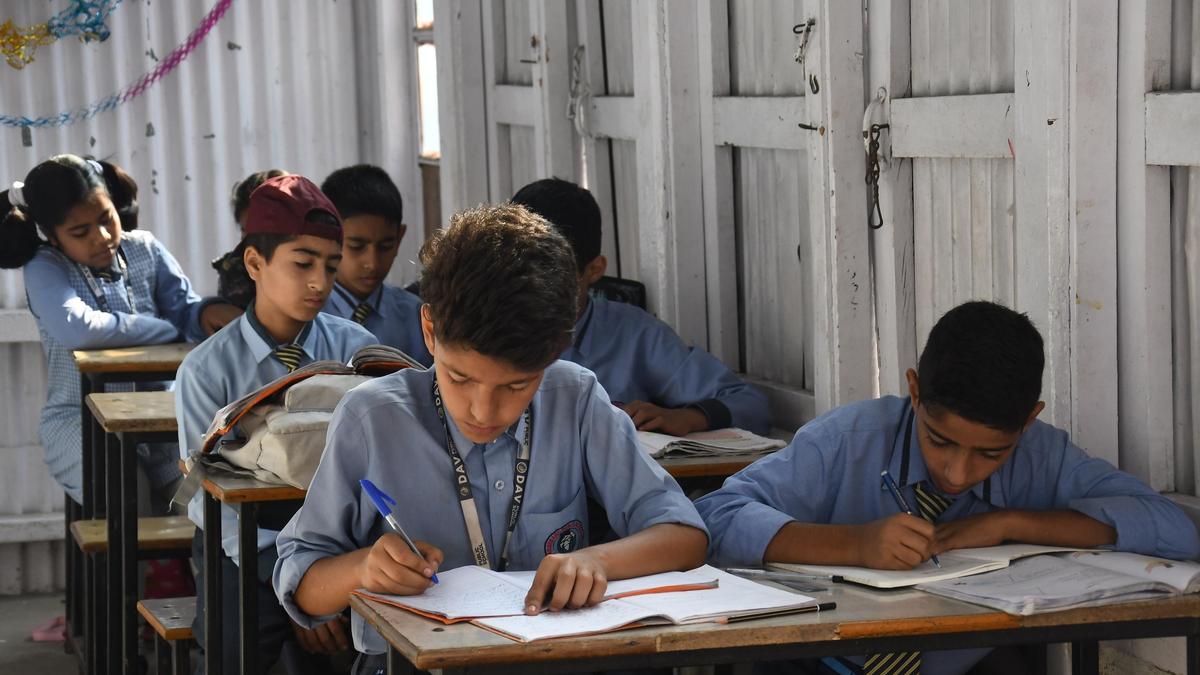Science
Homes and Schools Become Major Infection Hubs in India

As seasonal viral and respiratory illnesses rise in India, recent research reveals that homes and schools are becoming key settings for the spread of infections. A study published in Nature Communications highlights a distinct transmission pattern where close and prolonged contacts occur primarily within households and educational institutions, contrasting with other regions where workplaces or public events are significant contributors.
Infection Patterns in Domestic Settings
The study indicates that among 10- to 19-year-olds in India, participants reported an average of 10.2 daily contacts, one of the highest figures across all age groups. Notably, household members accounted for 36% to 44% of these interactions, establishing homes as critical environments for sustained exposure. The average duration of contact within households was approximately 2.5 hours.
Schools, identified as the primary non-home contact sites, play a significant role in this transmission. Among children aged 10 to 14, a remarkable 64% of all contacts occurred in school—a figure that stands out when compared to similar studies conducted in other countries. For younger children, particularly those under five, the proportion of contacts with non-household members was lower, yet most exposure took place at home. This suggests that visitors and caregivers significantly contribute to indoor transmission.
Dr. S. Satyamanasa Gayatri Vinay, senior consultant in pediatrics at SRM Global Hospitals in Chennai, asserts, “Once one family member shows symptoms, the risk of transmission to others is high.” She notes that infections often originate outside the home, particularly in schools, before spreading internally.
Impact of Schools on Transmission
The connection between schools and household infections is evident in clinical settings. Dr. R. Nithiyanandan, a consultant in interventional pulmonology at Apollo Hospitals, has observed a marked increase in household clusters of respiratory infections. “We have seen one member fall ill, with others developing symptoms shortly thereafter,” he explains. Contributing factors include seasonal changes, crowded indoor spaces, and a decline in adherence to preventive measures such as mask-wearing and hygiene practices, which were more rigorously observed during the pandemic.
Schools facilitate close interactions among children, increasing the likelihood of respiratory virus transmission through airborne droplets from coughing, sneezing, or even talking. When these children return home, they can easily transmit infections to parents and grandparents, who may have compromised immune systems.
Strategies for Prevention
Doctors highlight that schools present valuable opportunities for infection control. Initiatives such as improving ventilation, encouraging sick children to stay home, and reinforcing hand hygiene can significantly disrupt transmission chains. Dr. Gayatri Vinay points to research indicating that most transmission among siblings occurs at home following school exposure; therefore, preventive measures in schools have a direct impact on family health.
Previous studies, including the POLYMOD and CoMix contact-pattern studies during the COVID-19 pandemic, have also shown that households consistently act as major sites of infection spread, with secondary attack rates estimated at approximately 30% to 40%.
To mitigate transmission, families are encouraged to adopt straightforward practices: maintain good handwashing routines, cover coughs and sneezes, increase airflow indoors, and limit close contact when someone is unwell. Vaccination remains a crucial tool, particularly for children, older adults, and individuals with chronic health conditions.
Dr. Nithiyanandan emphasizes the importance of rest and recovery, stating, “Staying home when symptomatic is crucial to breaking the chain of transmission.”
Building Community Awareness
The study also reveals that work-related contacts account for 6% of all interactions, with 11% occurring during transit, indicating additional avenues for infection spread.
Experts agree that hospitals and healthcare professionals hold a vital role in enhancing community awareness of infection control. Dr. Gayatri Vinay advocates for outreach efforts that extend beyond outpatient visits into everyday settings. This includes engaging schools and leveraging local networks to disseminate practical health advice.
Dr. Surendran R., a consultant in infectious diseases at SIMS Hospital in Chennai, suggests that demonstrations of proper hygiene during hospital visits can provide relatable guidance. Collaborating with parent-teacher associations and community groups can ensure consistent messaging around prevention.
Conclusion
The insights derived from this research and clinical observations underscore the critical need for infection prevention strategies to begin in environments where people spend the most time together—homes and schools. As respiratory illnesses circulate more widely, focusing on these intimate settings may significantly reduce both the frequency and severity of infections.
Ultimately, experts assert that safeguarding public health in India hinges less on broad restrictions and more on fostering vigilance and care within the spaces where people live, learn, and recover together.
-

 World4 months ago
World4 months agoSBI Announces QIP Floor Price at ₹811.05 Per Share
-

 Lifestyle4 months ago
Lifestyle4 months agoCept Unveils ₹3.1 Crore Urban Mobility Plan for Sustainable Growth
-

 Science3 months ago
Science3 months agoNew Blood Group Discovered in South Indian Woman at Rotary Centre
-

 Sports3 months ago
Sports3 months agoBroad Advocates for Bowling Change Ahead of Final Test Against India
-

 World4 months ago
World4 months agoTorrential Rains Cause Flash Flooding in New York and New Jersey
-

 Top Stories4 months ago
Top Stories4 months agoKonkani Cultural Organisation to Host Pearl Jubilee in Abu Dhabi
-

 Science4 months ago
Science4 months agoNothing Headphone 1 Review: A Bold Contender in Audio Design
-

 Top Stories4 months ago
Top Stories4 months agoAir India Crash Investigation Highlights Boeing Fuel Switch Concerns
-

 Sports3 months ago
Sports3 months agoCristian Totti Retires at 19: Pressure of Fame Takes Toll
-

 Business4 months ago
Business4 months agoIndian Stock Market Rebounds: Sensex and Nifty Rise After Four-Day Decline
-

 Politics4 months ago
Politics4 months agoAbandoned Doberman Finds New Home After Journey to Prague
-

 Top Stories4 months ago
Top Stories4 months agoPatna Bank Manager Abhishek Varun Found Dead in Well









